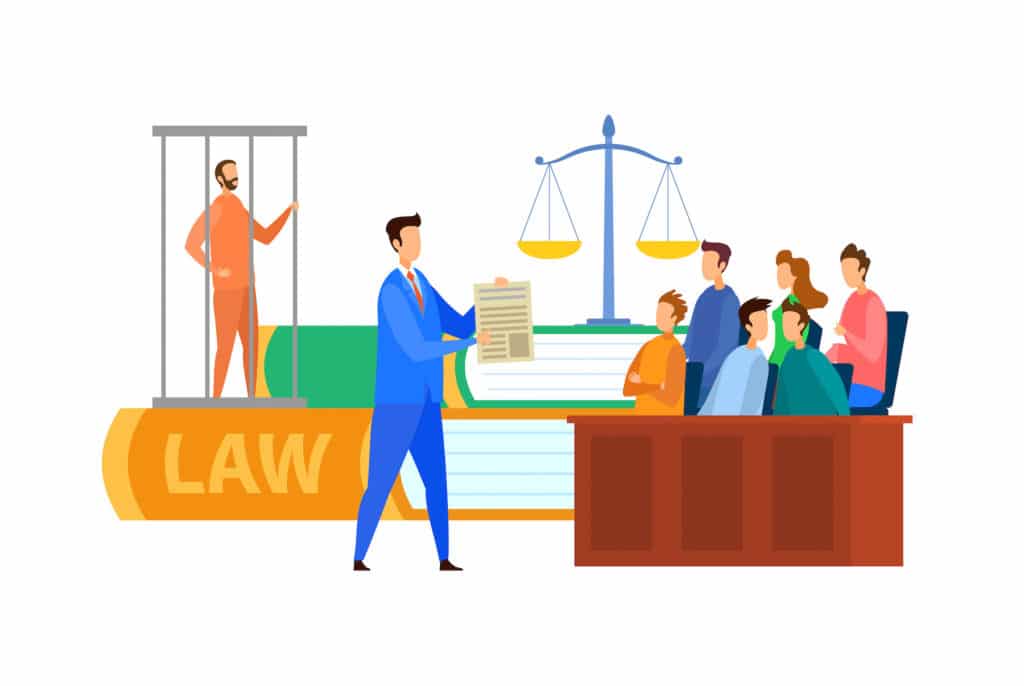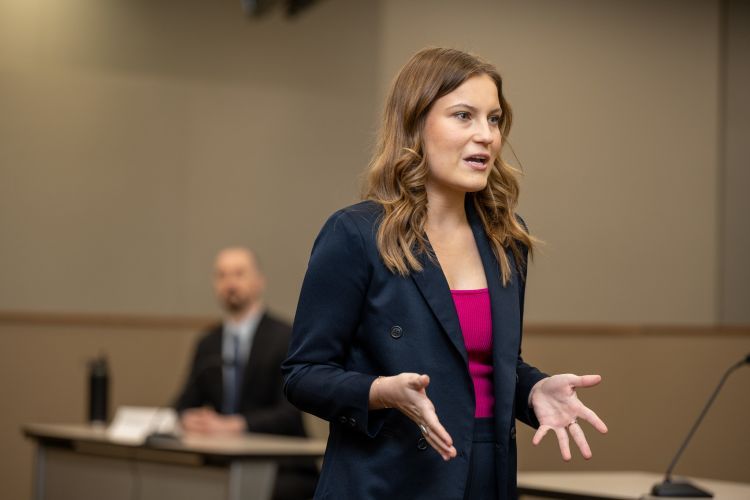Important Abilities for Crafting Influential Trial Presentations: A Comprehensive Guide
Important Abilities for Crafting Influential Trial Presentations: A Comprehensive Guide
Blog Article
Browsing the Intricacies of Test Presentations: Tips for Seamless Distribution and Engaging Disagreements
In the world of lawful procedures, the art of test discussion stands as an important determinant of success. As attorneys browse the elaborate internet of court room dynamics, the capability to effortlessly provide disagreements and proof while mesmerizing the court's focus comes to be critical. The complexities fundamental in test presentations call for a fragile equilibrium of skill, skill, and technique. By developing techniques that make sure a sleek delivery and crafting engaging arguments that resonate with the audience, lawyers can substantially improve their advocacy. In a world where persuasion preponderates, mastering the ins and outs of trial presentations is not merely an option however a requirement for those seeking to dominate in the court room.

Comprehending Trial Goals
To effectively navigate a test, it is vital to have a clear understanding of the purposes that need to be accomplished. Before entering the court, legal groups have to specify their objectives and preferred end results. These objectives work as assisting concepts throughout the trial, shaping strategies and affecting decision-making processes.
Comprehending test objectives involves an extensive evaluation of the situation, lawful precedents, and the customer's benefits. Trial Presentations. It calls for a meticulous exam of the facts, identifying vital issues, and expecting potential obstacles. By establishing specific and measurable goals, attorneys can tailor their discussions and arguments to straighten with the desired outcomes
In addition, a clear understanding of test purposes allows legal teams to prioritize evidence, witnesses, and legal debates efficiently. It permits for the growth of a meaningful narrative that resonates with the court and court, reinforcing the total situation presentation.

Organizing Proof Efficiently
Having a clear understanding of test goals lays the foundation for organizing evidence successfully in lawful proceedings - Trial Presentations. By lining up the presentation of evidence with the wanted results of the trial, legal groups can reinforce their debates and enhance their persuasiveness. One important facet of arranging proof is categorization. Grouping evidence based on styles or importance to specific lawful elements can aid enhance the presentation and make complicated information more absorbable for the judge or court.
Another crucial element in organizing evidence effectively is developing a rational flow. Offering evidence in a sequential and meaningful way can assist construct an engaging story that sustains the legal disagreements being made. Additionally, utilizing visual aids such as timelines, graphs, or charts can better enhance the company of evidence and assist in making clear complex relationships or sequences of occasions.
Additionally, making sure that all proof presented is acceptable and pertinent to the instance is essential. Inadmissible or irrelevant evidence can diminish the strength of the disagreement and potentially hurt the credibility of today event. A meticulous evaluation and choice process need to be taken on to include just the most impactful and legally sound evidence in the test discussion.
Crafting Persuasive Stories
Crafting engaging stories plays a critical function in presenting influential arguments during legal process. A well-crafted narrative has the power to astound the audience, stimulate feelings, and eventually sway the choice for the offering event. When building a story for a test presentation, it is vital to establish a clear storyline that highlights vital factors and connects them in a meaningful manner. Begin by detailing the truths of the situation in an engaging way, guaranteeing that the sequence of events is simple to adhere to. Introduce characters efficiently, providing background info that assists the audience comprehend their activities and motivations. In addition, including vibrant descriptions and engaging language have a peek here can bring the story to life, making it a lot more memorable for the discretionary. By weaving together he said evidence, testimony, and legal debates right into a cohesive and influential story, lawyers can efficiently promote for their customers and raise the probability of a desirable result in the courtroom.
Mastering Visual Aids
Effective use of aesthetic help is essential to enhancing the impact and clearness of trial presentations. Visual aids, when used tactically, have the power to streamline intricate details, reinforce bottom lines, and leave an enduring perception on the discretionary. To master visual aids in trial discussions, it is important to make sure that they are clear, concise, and appropriate to the arguments being made.
When including visual help, such as graphes, charts, photos, or timelines, right into a test discussion, it is essential to keep them visually appealing yet professional. The visuals should complement the verbal debates, supplying a visual depiction of the info being reviewed without overwhelming the audience with unneeded information.
Additionally, exercising with the visual help in advance is imperative to make certain a smooth delivery throughout the trial. Acquainting oneself with the material, shifts, and timings of each aesthetic aid can help keep the flow of the presentation and avoid technological glitches that might develop.
Delivering Impactful Closing Disagreements
A compelling closing disagreement serves as the end result of a trial discussion, enveloping the core narrative and persuading the judge and jury towards a beneficial choice. To supply an impactful closing debate, it is critical to succinctly wrap up bottom lines, highlight the strengths of your instance, and resolve any kind of weak points in a tactical way. Begin by describing the major disagreements that sustain your customer's setting, stressing why the proof presented throughout the test sustains your story. It is crucial to create a sense of communication and clarity, directing the court and jury towards the desired conclusion.
Moreover, including emotional appeal can further enhance your closing debate. Inevitably, a well-crafted closing disagreement ought to leave a lasting perception, compelling the judge and jury to rule in your client's support.
Final Thought
In verdict, mastering trial presentations involves understanding purposes, arranging proof, crafting stories, using visual help, and providing impactful closing disagreements. By executing these strategies efficiently, legal representatives can present their case flawlessly and make compelling debates in the courtroom. It is crucial to navigate the intricacies of trial presentations with precision and ability to attain success in legal proceedings.
By straightening the presentation of evidence with the desired results of the trial, lawful teams can reinforce their arguments and boost their persuasiveness (Trial Presentations). To understand visual aids in trial discussions, it is vital to make certain that they are clear, succinct, go to my blog and appropriate to the debates being made
A compelling closing disagreement serves as the end result of a trial presentation, enveloping the core story and encouraging the judge and jury in the direction of a favorable decision. Begin by detailing the main disagreements that sustain your customer's position, emphasizing why the evidence provided throughout the trial sustains your narrative.In final thought, mastering trial discussions entails understanding objectives, arranging evidence, crafting stories, making use of visual aids, and providing impactful closing debates.
Report this page